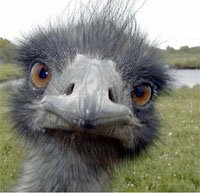Salzburg
Salzburg is the fourth-largest city in Austria (Popularion ~150,000) and the capital of the federal state of Salzburg. Salzburg's "Old Town" with its world famous baroque architecture is one of the best-preserved city centers in the German-speaking world, and was listed as a UNESCO World Heritage Site in 1997. The city is noted for its Alpine setting. It is the birthplace of Wolfgang Amadeus Mozart and the setting for parts of the musical and film The Sound of Music, which features famous landmarks in Austria, but focuses mainly on Salzburg.
Hohensalzburg, the mightiest fortress of central Europe, was a powerful castle sitting in a prominent position on one of the highest points of land in the city. It is one of Salzburg’s prime attraction and most dominant feature of the city’s skyline.
Our tour guide indicated that we picked a good time to visit. The town is very busy during the summer with thousands of tourists visiting to attend plays, music festivals and concerts. Two sites that we did not have time to see were the salt mines and Hitler’s Eagles Nest which was just a few miles away in nearby Germany.
Hohensalzburg, the mightiest fortress of central Europe, was a powerful castle sitting in a prominent position on one of the highest points of land in the city. It is one of Salzburg’s prime attraction and most dominant feature of the city’s skyline.
Our tour guide indicated that we picked a good time to visit. The town is very busy during the summer with thousands of tourists visiting to attend plays, music festivals and concerts. Two sites that we did not have time to see were the salt mines and Hitler’s Eagles Nest which was just a few miles away in nearby Germany.
Double click to enlarge Pictures

A view of Salzburg from the Hohensalzburg Fortress. (pic from WEB)

A view of the Salzach River.

The location where parts of the Sound of Music was filmed.

Fortress Hohensalzburg

Venicular to the fortress. The tram car is at the bottom.

Another view of the old city from the Hohensalzburg Fortress. The gold ball in the courtyard is where locals play chess on a large outdoor 'board'.

Inside the fortress. It was a massive structure.

Horse and buggy rides are very popular in Salzburg.

A typical street in the old city. They have a McDonalds here!

Morzart's birthplace. He moved to a house in the new city at the age of 17.

A church graveyard in the old city. The gravesites were very ornate and well kept.

Don Armour in front of the Salzburg Cathedral. Don was the coordinator for the ski trip to Selva.

Chess players with a million dollar view. If you want to see what this looks like from the fortress, go back a few pictures.



















































